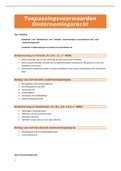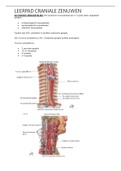Summary
Samenvatting Introductie in onderzoeksmethoden
- Course
- Institution
Samenvatting van het hele boek van Research methods en een groot deel van de college's. Het grootste deel is Nederlands geschreven maar een aantal stukjes zijn nog in het engels, voornamelijk voorbeelden.
[Show more]












